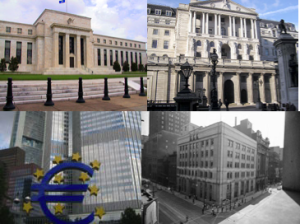by Jeff Clark – Hard Assets Alliance :
It’s painfully clear that Swiss monetary policy failed to work as planned—they pegged their currency to the euro just three years earlier and were unable to sustain it. On top of that, the SNB now charges commercial depositors 0.75% for the privilege of holding their money! Even some retail and private banks have begun to apply the negative rates on large customer deposits.
And yet they’re not the only country with negative interest rates: Two-year government bonds are also negative in…
• Germany
• Finland
• Austria
• Denmark
• France
• Holland
• Belgium
• Slovakia
• Sweden
• Japan
According to the Financial Times, there is now $3.6 trillion of government debt around the world with negative interest rates!
Meanwhile, Japan continues to inject $700 billion a year into their financial system, which equals 12% of their GDP. Their debt now exceeds 250% of GDP, and the government uses more than 25% of tax revenue just to pay the interest on that debt!
Then the ECB unveiled an expanded program where it will increase asset purchases to €60 billion a month through at least September 2016, its biggest push yet, to fend off deflation and revive the economy. So, why are they expanding the program when the prior money-printing efforts didn’t work? What will they do if bigger isn’t better and the program continues to fail?
Central bankers are taking the easy way out, because printing money (QE) reduces the incentive for governments to make structural reforms. This tells us that the ongoing experiments by central bankers—the largest such experiments ever conducted in history—will not accomplish what they had hoped and will hand us some very unpleasant consequences.
We live in a central bank-controlled world more than ever before, yet the odds of central planners steering us out of the corner they’ve painted us all into are remote. The gold you hold will offer a measure of protection against the fallout when it becomes obvious to the mainstream that failure is likely.
Article originally posted in the February issue of Smart Metals Investor at HardAssetsAlliance.com.


